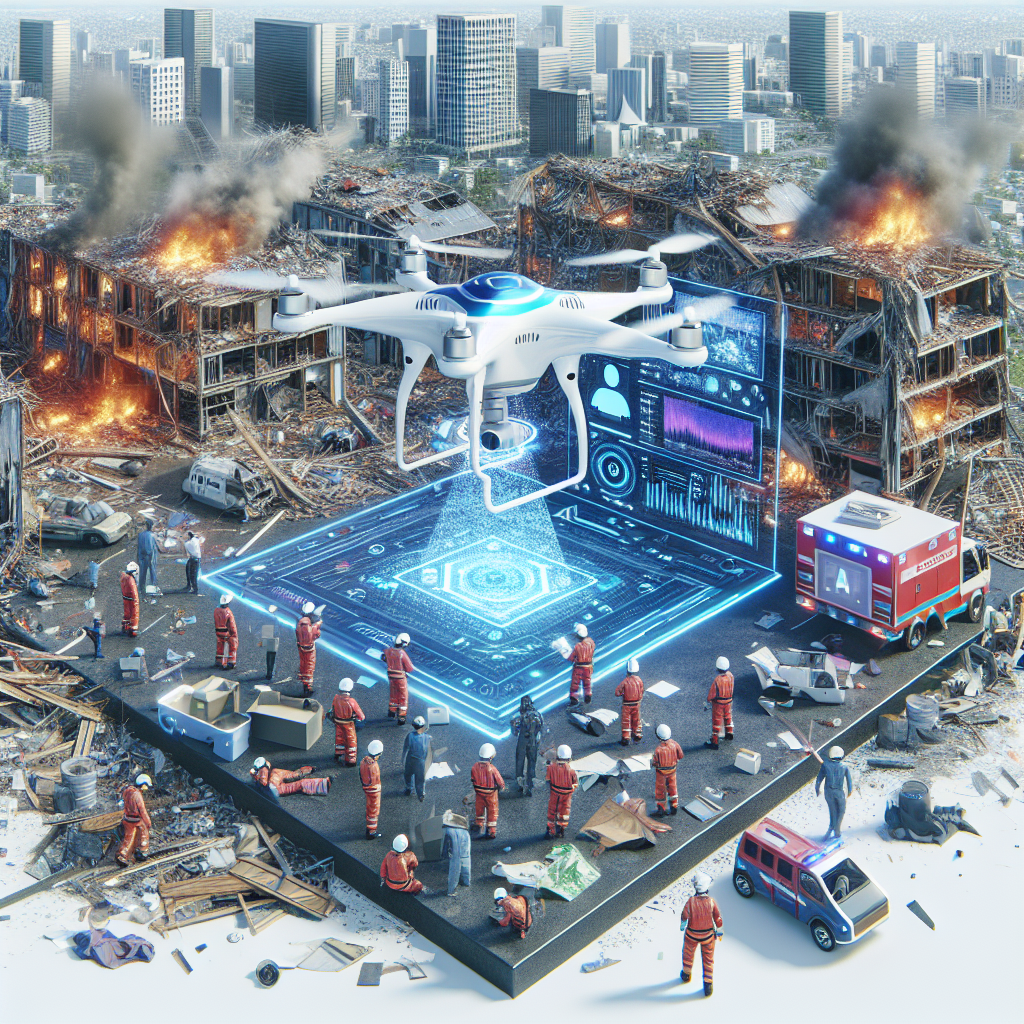In recent years, the use of artificial intelligence (AI) in disaster response has become increasingly prevalent. AI technologies have the potential to greatly improve the efficiency and effectiveness of disaster response efforts, helping to save lives and reduce damage in the face of natural disasters such as hurricanes, earthquakes, and wildfires. This article will explore the various ways in which AI deployment is being used in disaster response, and the important role it plays in mitigating the impact of disasters.
One of the key ways in which AI is being used in disaster response is in the area of predictive modeling. AI algorithms can analyze large amounts of data from various sources, such as weather patterns, terrain maps, and historical disaster data, to predict when and where disasters are likely to occur. This allows emergency responders to better prepare for disasters and allocate resources more effectively. For example, AI can be used to predict the path of a hurricane or the likelihood of a wildfire spreading, allowing authorities to evacuate residents and deploy resources to the most at-risk areas.
AI deployment is also being used in disaster response for damage assessment and recovery efforts. After a disaster strikes, AI-powered drones can be used to quickly assess the extent of the damage and identify areas that are most in need of assistance. This can help emergency responders prioritize their efforts and allocate resources more efficiently. AI can also be used to analyze satellite imagery and identify damaged infrastructure, helping to speed up the recovery process and ensure that critical services are restored as quickly as possible.
Another important use of AI in disaster response is in the area of communication and coordination. During a disaster, communication networks are often disrupted, making it difficult for emergency responders to coordinate their efforts and communicate with affected populations. AI-powered chatbots and virtual assistants can help to bridge this communication gap by providing real-time updates and information to those in need. These AI tools can also help to coordinate rescue efforts and provide support to those affected by the disaster.
In addition to these applications, AI is also being used in disaster response for risk assessment and preparedness planning. By analyzing data from past disasters and simulating various disaster scenarios, AI can help emergency responders identify potential risks and develop effective response plans. This can help to reduce the impact of disasters and save lives in the event of an emergency.
Overall, the role of AI deployment in disaster response is crucial in helping to mitigate the impact of disasters and save lives. By leveraging AI technologies, emergency responders can better predict, assess, and respond to disasters, helping to ensure the safety and well-being of affected populations. As AI continues to advance, its role in disaster response will only become more important, providing new opportunities to improve the effectiveness and efficiency of emergency response efforts.
FAQs:
Q: How is AI used in predicting natural disasters?
A: AI algorithms analyze data from various sources to predict when and where disasters are likely to occur, such as hurricanes, earthquakes, and wildfires. This allows emergency responders to better prepare for disasters and allocate resources more effectively.
Q: How is AI used in damage assessment and recovery efforts?
A: AI-powered drones can be used to quickly assess the extent of damage after a disaster strikes, helping emergency responders prioritize their efforts and allocate resources more efficiently. AI can also analyze satellite imagery to identify damaged infrastructure and speed up the recovery process.
Q: How does AI help with communication and coordination during a disaster?
A: AI-powered chatbots and virtual assistants can provide real-time updates and information to those in need during a disaster, helping to bridge communication gaps and coordinate rescue efforts. These tools can also help to provide support to affected populations.
Q: How is AI used in risk assessment and preparedness planning?
A: AI analyzes data from past disasters and simulates various disaster scenarios to help emergency responders identify potential risks and develop effective response plans. This can help to reduce the impact of disasters and save lives in the event of an emergency.

